Examine a serious angler’s fly box(s), and you will undoubtedly find a Hare’s Ear nymph in one form or another.
Simply, it’s an indispensable nymph for rivers, lakes and reservoirs, and…
I wouldn’t go fishing without a few in my fly box.
The Hare’s Ear nymph has been catching trout and grayling for over 100 years, in one form or another. Consequently, a multitude of nymph patterns exist. However, this post covers how to tie the default pattern for fishing on rivers and stillwaters.
Gold ribbed Hare’s Ear nymph tying instructions:
Material list:
- Hook: #16 to 12 Kamasan
- Weight: up to 6 turns of lead wire
- Thread: Rusty brown 8/0 Uni-Thread
- Tail: Ginger cock fibres
- Body & Thorax: Light Hares Mask – WAPSI
- Rib: Gold tinsel
- Thorax cover: 6 pheasant tail fibres
Step-by-step fly-tying instructions:
Don’t overdress the nymph because one with a slim body profile will be more effective at catching trout and grayling. Also, if you’re new to fly tying, it’s an easy nymph to tie because the materials needed are cheap and easy to obtain.
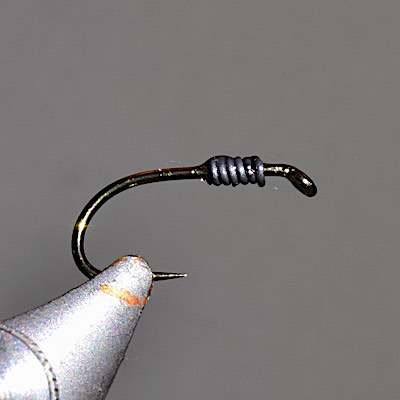
Step 1. Add up to 6 turns of lead wire to the hook, depending on the weight needed. Fix the wire to the hook with a drop of superglue.
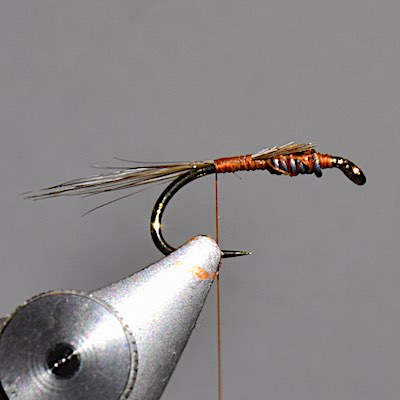
Step 2. Starting behind the eye run the thread towards the hook bend and catch in the cock fibre tail.
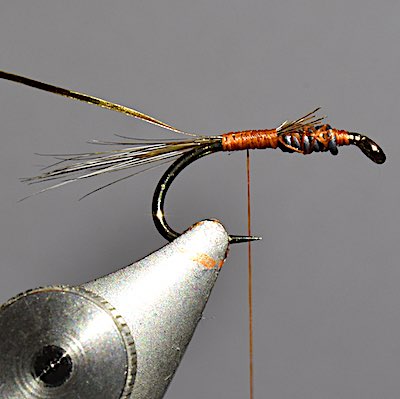
Step 3. For the rib, break off a short length of gold tinsel and tie it in. Then return the thread to the bend.
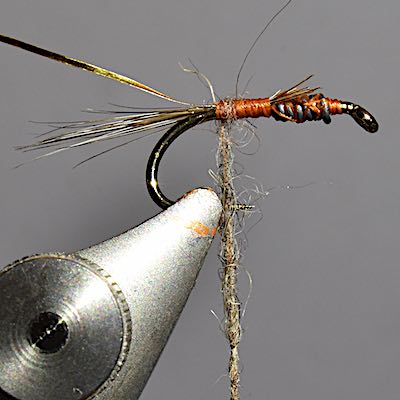
Step 4. Lightly dub the thread with the WAPSI dubbing.
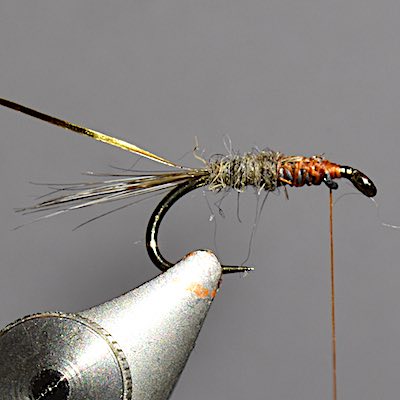
Step 5. Wind the dubbed thread up to the lead wire.
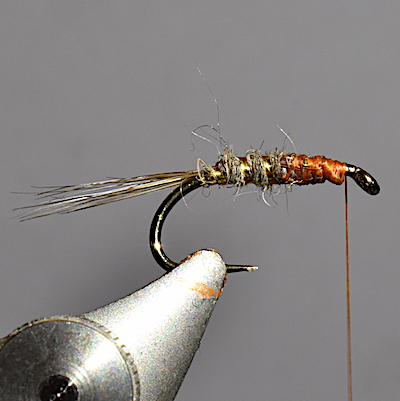
Step 6. Wind the gold tinsel in open turns to the thorax area and secure with the tying thread.
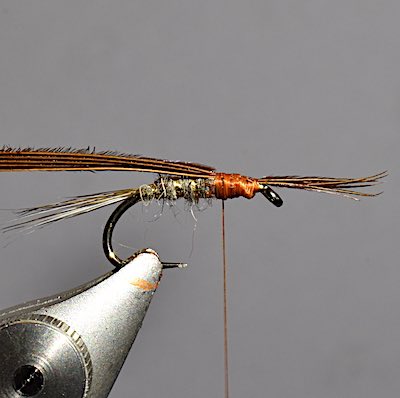
Step 7. Take 6 pheasant tail fibres and tie them in with their points protruding over the hook eye. Wind the thread to the back of the thorax area.
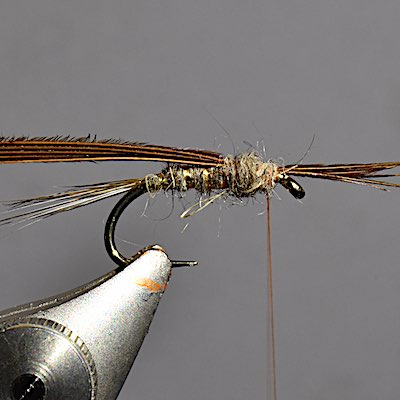
Step 8. Lightly dub the thread again and from the thorax.
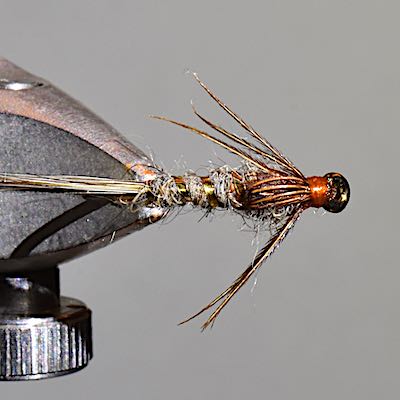
Step 9. Pull the tips of the pheasant tail fibres back to represent the legs. Trap in position by forming the wing case with the butt ends of the pheasant. Whip finish and varnish the head.
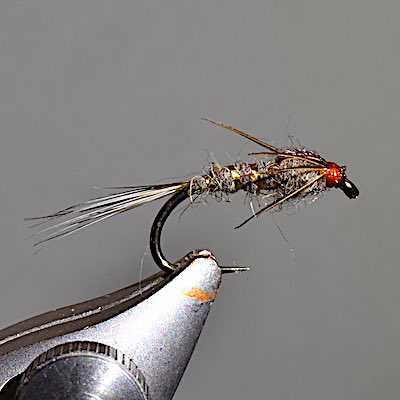
Step 10. Side view of the finished GRHE nymph.
Simple modifications to the above pattern will give you a series of nymphs to try when the fish become fussy. Try varying the body colour, rib material/colour, and adding a tungsten bead head.
If you are new to fly tying, the following video by Davie McPhail demonstrates how to tie a Hare’s Ear nymph and is well worth watching.
How to fish a Hare’s Ear nymph:
I normally fish the nymph in streamy runs, riffles, and pool heads on the Welsh Dee, because water turbulence brings the nymph to life…
making it irresistible when flies are hatching.
The gold-ribbed Hare’s Ear is not an imitation of a particular insect but a generic representation of mayflies and caddis nymphs. Its rough appearance resembles nymphs shedding their shuck as they hatch. Overall…
It’s a killer imitation.
It’s on par with a pheasant tail nymph.
Whenever olives are hatching, I will try one of the nymphs first. Especially when any of the following are starting to hatch:
- March Browns
- Large Dark Olives
- Large Brook Dun
- Medium Olive
- Olive Upright
- Stoneflies
The GRHE has proven its effectiveness on stillwaters. Brown and rainbow trout find it attractive when fished very slowly on a floating or sinking fly line.
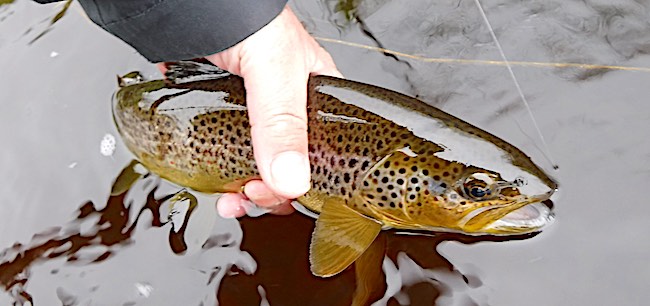
I’ve also caught sea trout fishing a GRHE ear nymph on light tackle…
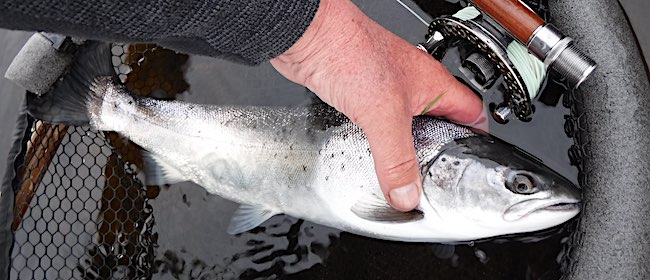
Finally, I hope this article stimulates you to tie the Hare’s Ear nymph and try them on your local rivers or stillwaters.
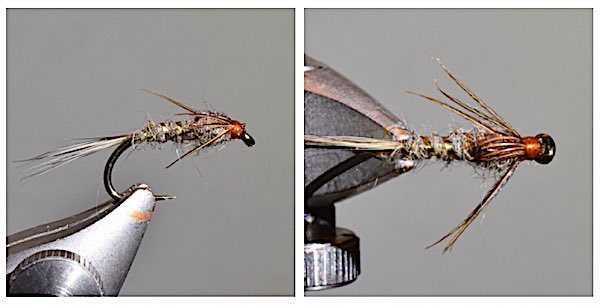
Great piece Andrew , used to tie this the rougher the body the better don’t dub too tight , . Your articles make you start to realise that you can fish a full season with probably 5 patterns in varying sizes and not miss a fish…..but where’s the fun in that eh ?
Hi James,
5 patterns in various sizes would cover most eventualities on the Welsh Dee. Then it’s more about how you fish them.
Cheers, Andrew
A historic and genuinely killer pattern. My version of this fly is rough by comparison, but it has caught trout and many other fish for me for over 64 years. Greatly appreciate your posts.
Hi Paul,
I agree rough is often better. All my flies look rough after they have caught a couple of fish and they usually work until there is not much left of them.
Cheers, Andrew
Very true Andrew, I’ve had one of my best days on the Dee at Typhos this year, with using just 1 PTN without any dropper. In my book it’s probably the best fly to use.
Great to hear it is bringing you success 🙂
Excellent post as always. I really do agree, it’s one of the handful of flies you should always have in your box. It imitates a huge range of things. Definitely saved me a lot of blank days.
Nice tying as well Andrew.
Hi Alex,
Great to hear you enjoyed the post and thanks for the feedback.
Cheers, Andrew
Thanks Andrew, your posts are always inspiring, informative, relevant and greatly appreciated.
Steve
Hi Steve,
Great to know that this post has inspired you. I hope it helps you catch a few more fish.
Cheers, Andrew
Thank you so much for sharing all your experience and genuine passion like surely most of us , I’m agreed to all the guys , often is more productive a rough imitation than a perfect but static pattern …probably is producing a vitality illusion
Great to hear you enjoyed the post.
Thanks for your comments. Cheers, Andrew
Hi Andrew , yes GRHE is one of my go to patterns .
I have been following your articles for a few years now and find them very useful and also watch you u tube clips.
Now the days are getting shorter and its getting a lot colder.I was wondering what you would
recommend to keep your hands warmer – I believe I saw you wearing a pair of latex surgical gloves,do they help much?
regards
Alan